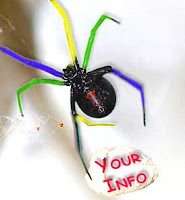Patterns and Collective Cognitive
When I first postulated in 2007 that the patterns from chaotic systems found in the natural world could also be found in the world of human cognition, I was only transposing principles from one closed environment to another. The natural world comprises rules of physic interacting in the time-space continuum where we can observe weather patterns that are somewhat predictable partly because of measurable cycles such as the earth rotating around the sun for 365 days. The natural world’s clockwork model helps us establish ground rules and references that make the seemingly chaotic interaction of elements understandable and predictable. This is best demonstrated by Edward Norton Lorenz, an American mathematician, meteorologist, and pioneer of chaos theory. He discovered the strange attractor notion and coined the term butterfly effect.
But patterns are only meaningful if a conscious entity is there to observe them — the old philosophical principle of existence versus the reality we perceive. This perception is what drives our personal and collective awareness. From this simple observation, one can extrapolate that our own cognitive capability, although immaterial and only real in our neural pathways, is in its own right a closed environment and that information is the artifact that we create and consume in the same manner that the natural world produces matter and destroys it. Like the natural world, our cognition is subjected to time space to build patterns that create and reinforce our perception of reality. Likewise, an event causes us to react physically in some cases but also triggers expressions embodied in the form of information. Until the age of the internet, this information was curated with care to be recorded for prosperity. The alternative is for such information to be ephemeral and communicated orally to shape our evolving perception. Today this brief information is now captured and becomes palpable. But more importantly, each expression can be associated with other expressions through temporal proximity. This is no different than observing weather patterns forming over time and becoming observable.
By applying a purely organic temporal correlation algorithm to information, we were able to show patterns of emerging themes, or keyword memes™, that are connected without any machine-based inference of meaning. This means that we can reveal targeted ways that can be interpreted by an intelligent entity - human or machine.
You can see keyword memes about Big Data on Tweetzup to experience how we use our core awareness engine to show the movement trending tweets.
Happy New Year.
But patterns are only meaningful if a conscious entity is there to observe them — the old philosophical principle of existence versus the reality we perceive. This perception is what drives our personal and collective awareness. From this simple observation, one can extrapolate that our own cognitive capability, although immaterial and only real in our neural pathways, is in its own right a closed environment and that information is the artifact that we create and consume in the same manner that the natural world produces matter and destroys it. Like the natural world, our cognition is subjected to time space to build patterns that create and reinforce our perception of reality. Likewise, an event causes us to react physically in some cases but also triggers expressions embodied in the form of information. Until the age of the internet, this information was curated with care to be recorded for prosperity. The alternative is for such information to be ephemeral and communicated orally to shape our evolving perception. Today this brief information is now captured and becomes palpable. But more importantly, each expression can be associated with other expressions through temporal proximity. This is no different than observing weather patterns forming over time and becoming observable.
By applying a purely organic temporal correlation algorithm to information, we were able to show patterns of emerging themes, or keyword memes™, that are connected without any machine-based inference of meaning. This means that we can reveal targeted ways that can be interpreted by an intelligent entity - human or machine.
You can see keyword memes about Big Data on Tweetzup to experience how we use our core awareness engine to show the movement trending tweets.
Happy New Year.



Comments